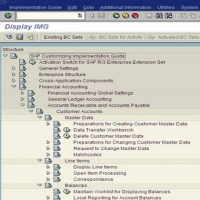Content

In addition, since the U.S. government fully backs agency bonds, they are almost as safe as treasuries. The yield curve is the collection of interest rates at a variety of maturities. In most cases, the longer the maturity on a bond, the higher its yield. A steeply sloped yield curve indicates a relatively big difference between yields on bonds with shorter and longer maturities. By studying the market, investors can predict the time a bond will be called. If the bond’s trading price is higher than what they paid, they can sell it and make a profit before it is called. Sinking Fund Redemption lets the issuer redeem bonds at fixed intervals and pay portions of the debt each.
Why would an investor want a callable bond?
Investors like them because they give a higher-than-normal rate of return, at least until the bonds are called away. Conversely, callable bonds are attractive to issuers because they allow them to reduce interest costs at a future date if rates decrease.
A callable bond is a type of bond that provides the issuer of the bond with the right, but not the obligation, to redeem the bond before its maturity date. A sinking fund is an account a corporation uses to set aside money earmarked to pay off the debt from a bond or other debt issue. A municipal bond has call features that may be exercised after a set period such as 10 years.
Bonds investment strategies
Investors are the lenders, giving money to businesses who promise to make interest payments to the investor. If the bond is callable, the issuer can call them back and pay the investor their principal plus any interest earned to that point. Callable bonds, which are sometimes called redeemable bonds, have become quite popular in recent years. That means last year 68.4% of all new bond issuance was callable compared to just 31.2% in 2005.
- In the case of rising interest rates, issuers have an incentive not to exercise calling bonds at an early date.
- A callable bond (also called “redeemable bond”) is a type of bond that allows the issuer of the bond to retain the privilege of redeeming the bond at some point before the bond reaches its date of maturity.
- A callable bond, also known as a redeemable bond, is a bond that can be redeemed by the issuer prior to the maturity date.
- In other words, it is merely an act of replacing an ongoing debt obligation with a further debt obligation concerning specific terms and conditions like interest rates tenure.
- This guide will examine what bonds are, their different types, how they work, and the pros and cons involved with this particular investment product.
The Callable Bond Definition pays its bondholders 6% x $10 million or $600,000 in interest payments annually. A callable bond benefits the issuer, and so investors of these bonds are compensated with a more attractive interest rate than on otherwise similar non-callable bonds. Bonds can deliver an attractive return without requiring that you take on the same level of risk as investing in the stock market.
Series 53: Make Whole Callable Bond
A https://personal-accounting.org/ allows bondholders to demand early principal repayment from the issuer, which is valuable for investors worried that a bond may decline in value in the case of rising interest rates. Interest from municipal bonds is free from federal income tax as well as state tax in the issuer state. As a result, yields are typically lower than those of federally taxable bonds.
What are 2 key advantages of callable bonds?
- Callable bonds pay higher interest rates than any other fixed instruments because the issuer has an option to call the bond anytime.
- This bond provides flexibility to issuers because of the embedded call option.